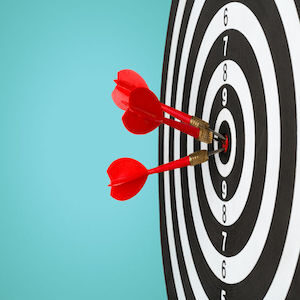By Dr. Ken Broda Bahm:

A few years ago, I had the opportunity to attend every day of a civil trial, and then interview all of the jurors at the end of their service. I planned out a very comprehensive interview for each of them, including running through the witness lists from all parties, and asking about each of the fact and expert witnesses they had heard from. Interestingly, while most of these witnesses had been on the stand for hours, or even days, there was a pattern in how much the jurors would remember from each witness. Generally, they remembered no more than three things from each witness. And for most witnesses, they remembered just one salient point that stuck with them.
I had been involved in the preparation of our witnesses, so I knew that every one of them had a multi-page outline of points that were covered. Ultimately for the jurors, that was distilled down to a few themes or a single theme. As I conducted those post-trial interviews though, it really hit home to me how much preparation needs to focus on the end result: the single simple takeaway that you leave with the jury. The implication is that, when preparing your own witnesses’ direct examinations, start with a goal and not an outline. Granted, the situation and law are going to require some complexity and detail, but boil it down as much as you can. If you try to make twenty main points, you’re leaving it to chance to determine what sticks with the jurors. Try to make one to three points, and you have a lot more control.
Start With Your Goals
Jurors don’t always understand that not everything is for the jury — there are legal elements that need to be covered in order to help you stave off a directed verdict. There are parts of the foundation that may not stick with the jury, but it would be noticed by the other side or the judge if you left them out. Those parts need to be covered, of course. But for the jury, it helps to make your central goals explicit. If you were to start with, “I want the jury to conclude from this witness that….” you should be able to complete that thought in a single sentence. That sentence is your starting point, not only for direct examination, but for your decision to call that witness in the first place. It is also not a bad idea to apply that thought to your cross-examination planning as well.
Then Add Your Outline
Even with clear goals, you probably won’t do a five-minute direct examination. Other than your main goals, you will still need additional content: placing the testimony into context, telling the story, and building character and credibility for your witness. For any facts or opinions you want the jury to accept, you will also want to walk through the process for getting there, so jurors can reach that conclusion on their own and not just accept the witness’s word for it. But that process, and the associated outline, should start from the main takeaways you want the jury to accept. Instead of generally asking, “What do I need to cover?” you should be asking, “First, what conclusions do I want to leave them with?” and “Second, how do I get there?”
Make Sure Your Witness is on the Same Page
Naturally, the witness needs to be a big part of this. In order to present a clear and smooth message in direct, you need to prepare to make sure that your witness understands the main goals and has at least a general sense of the outline you plan to follow.
I often feel that direct examination preparation gets short shrift. Attorneys tend to worry more about cross-examination, I suppose, because they have less control over that part. When it comes to their own examination, they tend to trust in their own ability to guide the witness. For the person testifying, however, the process can be nearly as stressful as cross-examination, particularly if they are not sure what their attorney wants to, and plans to, cover and when. In practice, it works best if both the overall goals and the outline are a collaborative process between the attorney and the witness: A joint effort to give the fact-finders what they need as efficiently and effectively as possible.
_
______
Other Posts on Direct Examination:
- Be the Director of Your Witness’s Direct Examination
- Rein In Your Redirect
- Scientific Testimony: Don’t Rely on Shortcuts